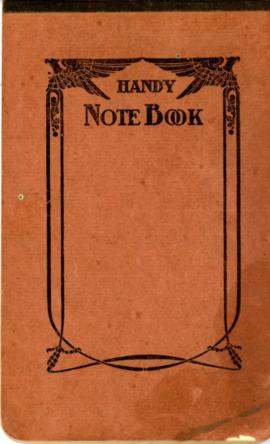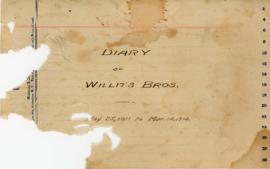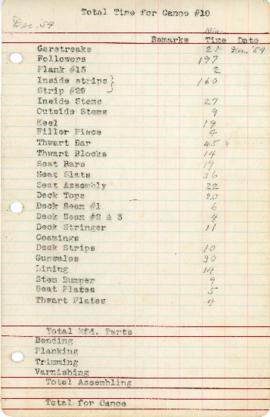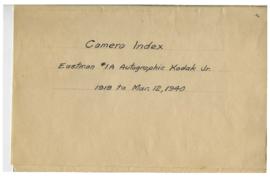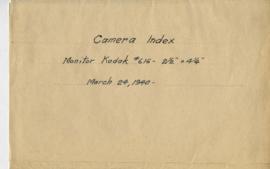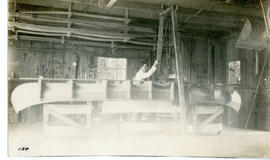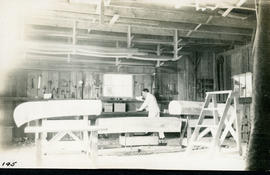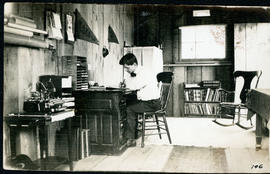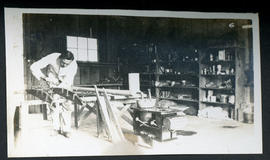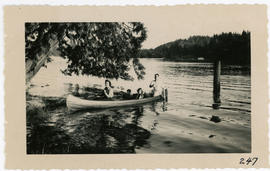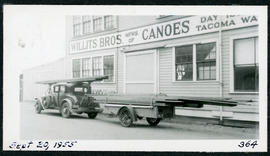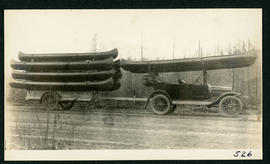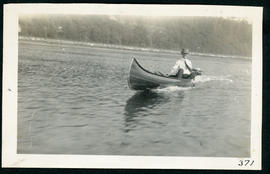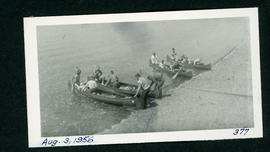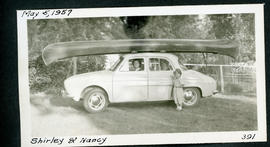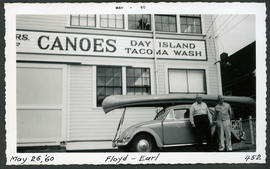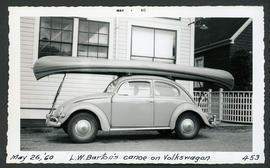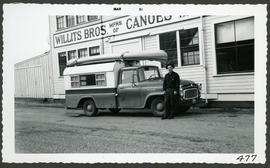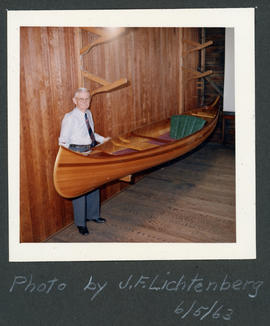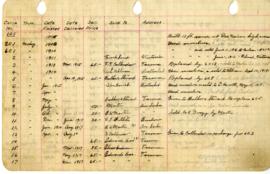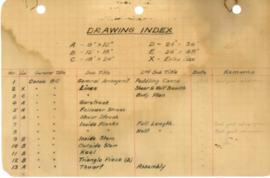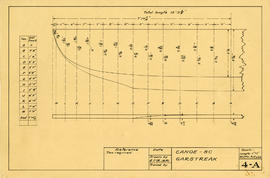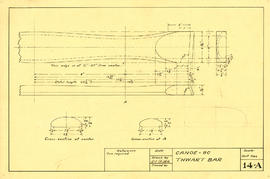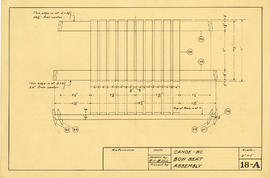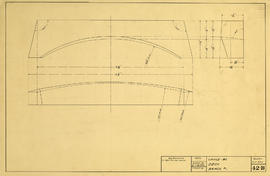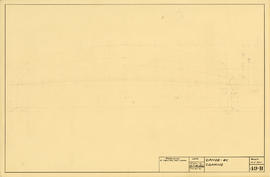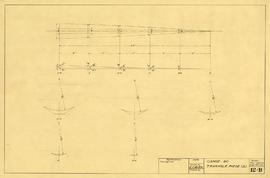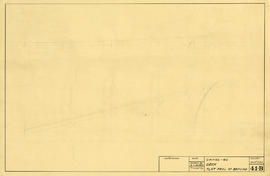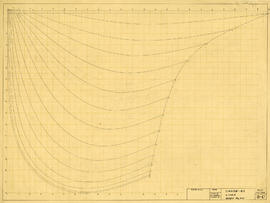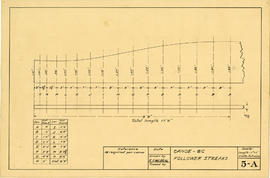Identity elements
Reference code
Name and location of repository
Level of description
Title
Willits Brothers Canoe Company Records
Date(s)
Extent
11 boxes and 2 flat files
(8.3 cubic feet)
Name of creator
Biographical history
Two brothers, Earl Carmi Willits (1889 – 1967) and Floyd Calvin Willits (1892 – 1962) founded the Willits Brothers Canoe Company in Tacoma, Washington in 1908. They relocated to a shop they constructed on the shores of Wollochet Bay near Artondale, Washington in 1914. The brothers moved the business one last time in 1921 to a factory they built on Day Island, in what is now University Place, Washington. Willits Brothers Canoe Company ceased production upon the death of Floyd Willits on June 10, 1962 and closed for good when Earl died on April 20, 1967. Upon Earl’s death, the company passed to half-brother Leonard Homer Willits, who expressed interest in continuing to produce canoes, but he died in 1973 without advancing the business beyond making a few repairs on canoes and selling some of the existing inventory of paddles and other accessories.
Willits Brothers Canoe Company (which the brothers incorporated as Willits Brothers, Inc. in 1926 and then reverted to the original unincorporated business name in 1937 after the state dissolved the corporation for non-payment of incorporation fees) produced a single model of a 17-foot double-planked canoe. The canoes built by the brothers evolved over time, and with the 10th model becoming the last version in 1930. After a few years of experimenting with Spanish cedar planking and oak and teak trim, the brothers settled on the standard materials of red cedar planking, mahogany gunnels, thwarts, and decks, white oak stems, and mahogany or spruce seats in their canoes. Most of the 951 canoes made by Willits Brothers Canoe Company were for paddling, although the company offered accessories to allow them to be sailed, rowed, or propelled by outboard motor. Also manufactured were spruce paddles, carrying thwarts, cartop carrier blocks and straps, wooden slat or upholstered seat backs, floor carpeting, copper air tanks, and canvas spray and storage covers. Repair of damaged Willits Brothers canoes and sale of repair parts also was a service offered by the company. The bulk of sales of Willits canoes were in Washington state to boys’ and girls’ camps, rental liveries, the Red Cross, and private individuals, although a significant market developed throughout the United States. Marketing was almost exclusively via word-of-mouth, since no records exist of advertisements being placed by the brothers in boating periodicals or newspapers.
Except for periods during each World War, the company operated continuously from its founding until Earl Willits’ death in 1967. During World War I, production ceased while Earl served in the 137th Aero Squadron in England and France, and Floyd served in the 166th Depot Brigade at Camp Lewis, Washington. The brothers mustered out after the war, Earl as a Sergeant First Class and Floyd as a Second Lieutenant. The brothers were too old to serve in the military during World War II, but restrictions on the materials needed for manufacture of their canoes prevented them from continuing production for a time, even though demand remained strong. While the business was shut down, Earl worked as an automotive instructor at the Mount Rainier Ordnance Depot, and Floyd was on the payroll of the Day Island Club, which served the residents of the Day Island community.
Both brothers married later in life but did not have children. Floyd married first, on April 20, 1939, to Ruth Alice Carter. Ruth had been previously married to Victor Henry Morgan, the half-brother of Murray Morgan, a well-known Tacoma historian, author and columnist. Ruth’s marriage to Victor ended in divorce, but her marriage to Floyd lasted until her death on December 31, 1956. Earl married Laura Magill Smith on December 27, 1944. Laura was the widow of Elmer Smith, the attorney involved in and representing members of the Industrial Workers of the World (the Wobblies) after an incident during Armistice Day celebration in Centralia, Washington in 1919 in which several people were killed and a Wobbly was lynched. Earl and Laura were married for almost 10 years, divorcing in October 1954. Laura died January 16, 1994.
Content and structure elements
Scope and content
Business records of the Willits Brothers Canoe Company, including designs for and information on manufacturing and maintaining canoes, photos of the Willits' family and friends, photos of the Puget Sound area from 1920 to the late-1960s, and files, maps, and architectural drawings relating to Day Island, and to the Day Island Improvement Club.
System of arrangement
Conditions of access and use elements
Conditions governing access
Technical access
Conditions governing reproduction
Languages of the material
Scripts of the material
Language and script notes
Finding aids
Acquisition and appraisal elements
Custodial history
Materials were removed from the Willits Brothers Canoe Factory Building on Day Island in April 2022 by Northwest Room staff. Upon transfer, the property was deeded to the Tacoma Public Library by Kendall Willits and Cindy (Willits) Bejarano.
Immediate source of acquisition
Appraisal, destruction and scheduling information
Accruals
An accrual was received from Kendall Willits and Cindy (Willits) Bejarano in June 2022. Additional accruals were transferred by Northwest Room staff from the Willits Brothers Canoe Company Factory on Day Island to the Tacoma Public Library in September and October of 2022.
Existence and location of originals
Existence and location of copies
Related archival materials
Related descriptions
Notes element
Specialized notes
Alternative identifier(s)
Rules or conventions
Sources used
Archivist's note
The Willits Brothers Canoe Factory Records were arranged and described between April and May 2022 by Patrick Chapman, founder of the McFarland Lake Canoe Company and the author of "The Willits Brothers and Their Canoes Wooden Boat Craftsmen in Washington State, 1908–1967." Additional assistance was provided by Leni Oman, Andy Bartels, and Michael Sean Sullivan.

